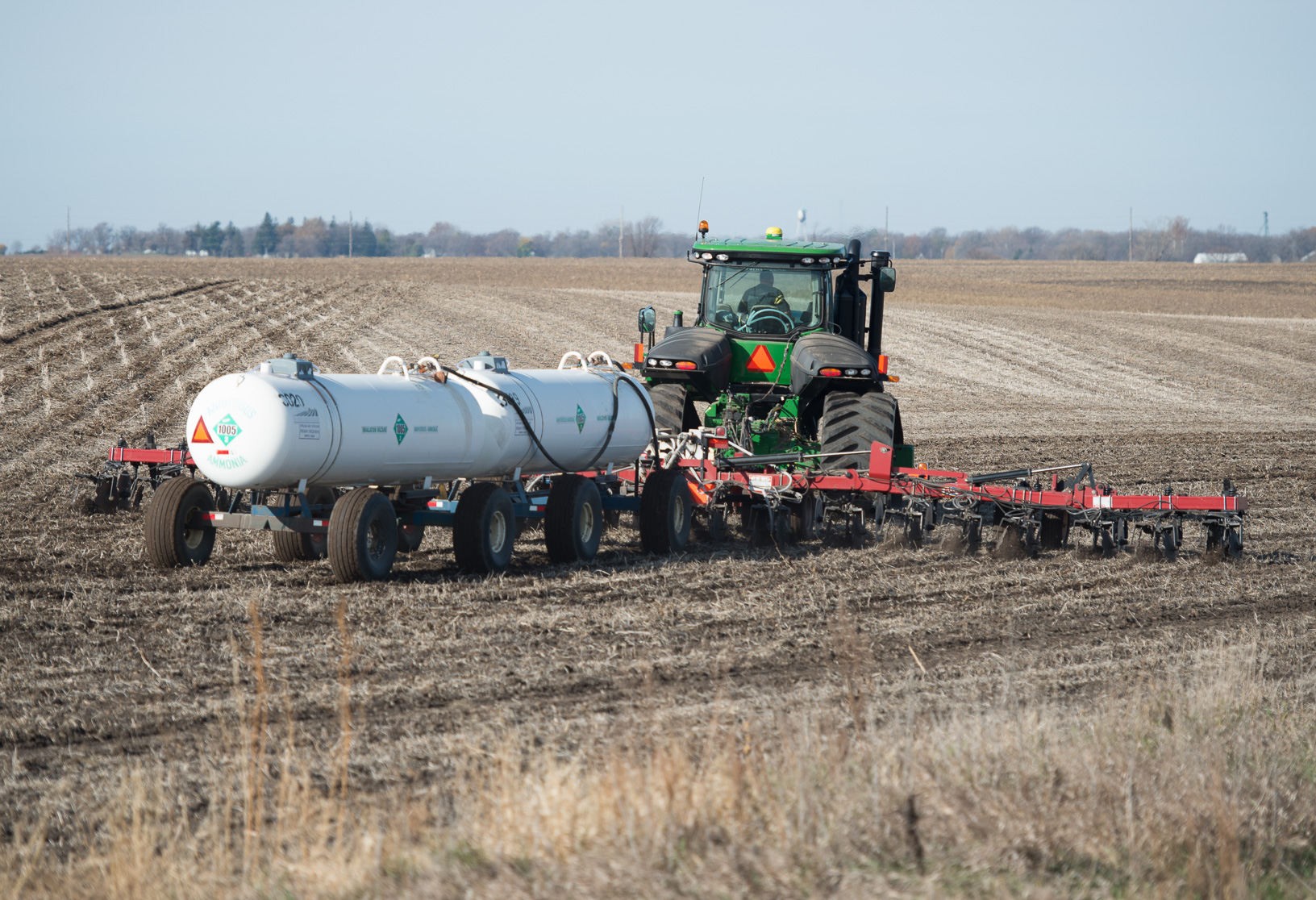
Be aware of the risk factors before applying anhydrous ammonia this fall. (Photo: Iowa Soybean Association)
What’s at stake for applying fall anhydrous too early?
October 14, 2021 | Kriss Nelson
With anhydrous ammonia costs rising, will farmers feel pressured into early fall applications?
What’s at risk economically and environmentally? That’s been the question coming from farmers this fall, according to Roger Wolf, director of Iowa Soybean Association’s Research Center for Farming Innovation (RFCI).
That depends, Wolf says.
“It is important to remember these decisions come at a risk and a lot of it depends on what the weather is going do,” Wolf says. “What we do know is that your nitrogen is vulnerable in warmer soils.”
When anhydrous ammonia (NH3) is applied into warmer soils, it is being converted to nitrate by the soil nitrifying bacteria. Because that conversion, called nitrification, is a biological process, it is largely impacted by soil temperature.
“The warmer the soil, the faster bacteria nitrify the applied ammonia to nitrate and the more nitrate is lost by leaching or denitrification with excessive rainfall,” says Peter Kyveryga, senior research scientist and director of analytics at the Iowa Soybean Association.
Nitrification of ammonia is strongly inhibited by low temperatures during winter months. So anhydrous applications in mid and late November when soil temperatures have historically dropped below 50 degrees and are trending downward ensures slower nitrification rates and reduces the risk of nitrogen loss following spring.
Soil temperatures, as well as history of when soil temperatures reach the 50-degree mark, can be found at: https://iowaweather.com/iowa-soil-temperatures/
Factors affecting application decisions
There are several important factors to consider, including the rate of anhydrous ammonia nitrification in the soil and the potential effect of rainfall, Kyveryga says.
Other factors that should be considered include the range of anticipated anhydrous prices and the cost of early fall nitrogen losses versus the gain from buying before costs increase.
Kyveryga compiled simulations showing the value of nitrogen lost from earlier than usual NH3 applications.
For example, an application in early November with warmer soils and above-normal rainfall the following spring, with a cost of NH3 at $800 a ton, could result in a loss of $15 per acre of nitrogen.
That cost of nitrogen loss will increase up to $25 an acre if NH3 prices rise to $1,200 a ton.
The cost of lost nitrogen could be higher — up to $30 an acre — if the NH3 is applied even earlier in the fall, for example, by Oct. 20.
“The bottom line is that the timing of application has a greater economic impact on the relative value of nitrogen than the anticipated price increase of anhydrous ammonia,” Kyveryga says.
With the higher cost of nitrogen and an unpredictable corn market, farmers may choose to reduce fall nitrogen application rates to save money.
“If the rates are reduced to optimize profitability and we add up the lost value of nitrogen from early fall applications and excessive spring rainfall, we will likely need more nitrogen for in-season rescue applications to compensate the loss,” says Kyveryga. “As a result, the economics of pre-optimal fall nitrogen applications in advance of anticipated product cost increases becomes risky.”
Back